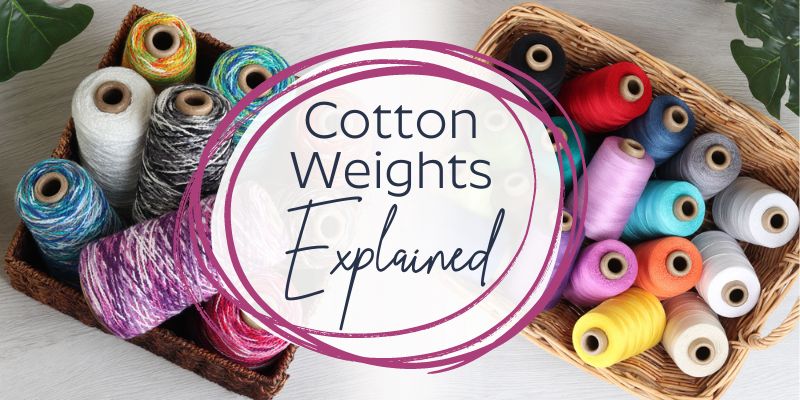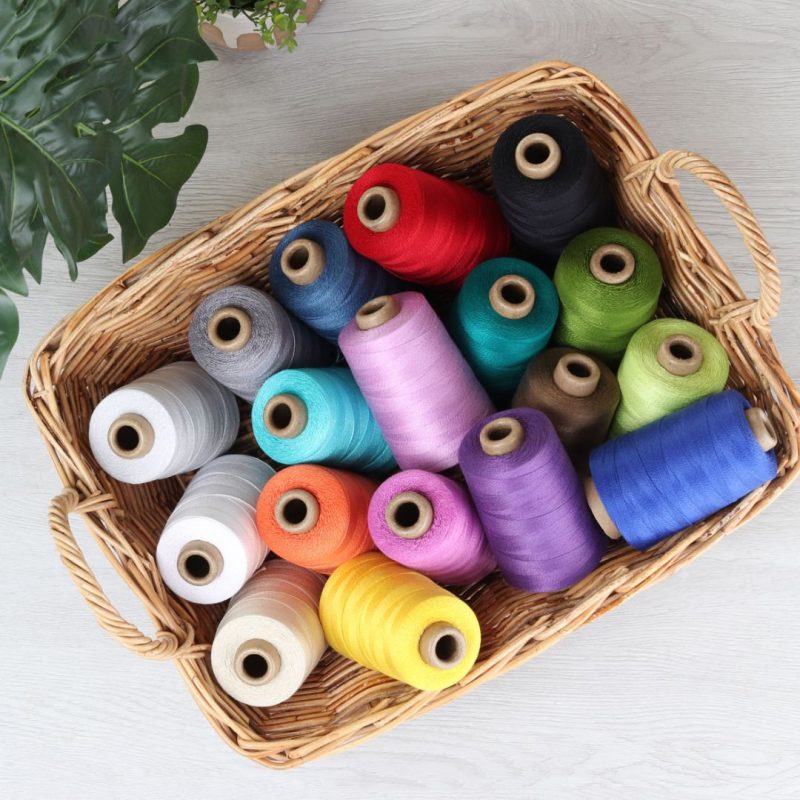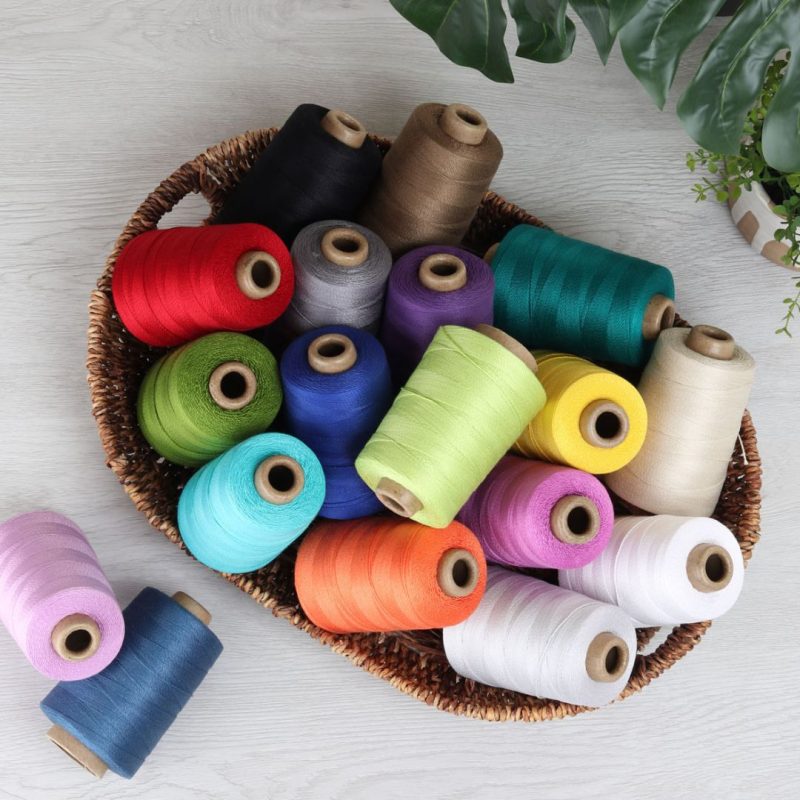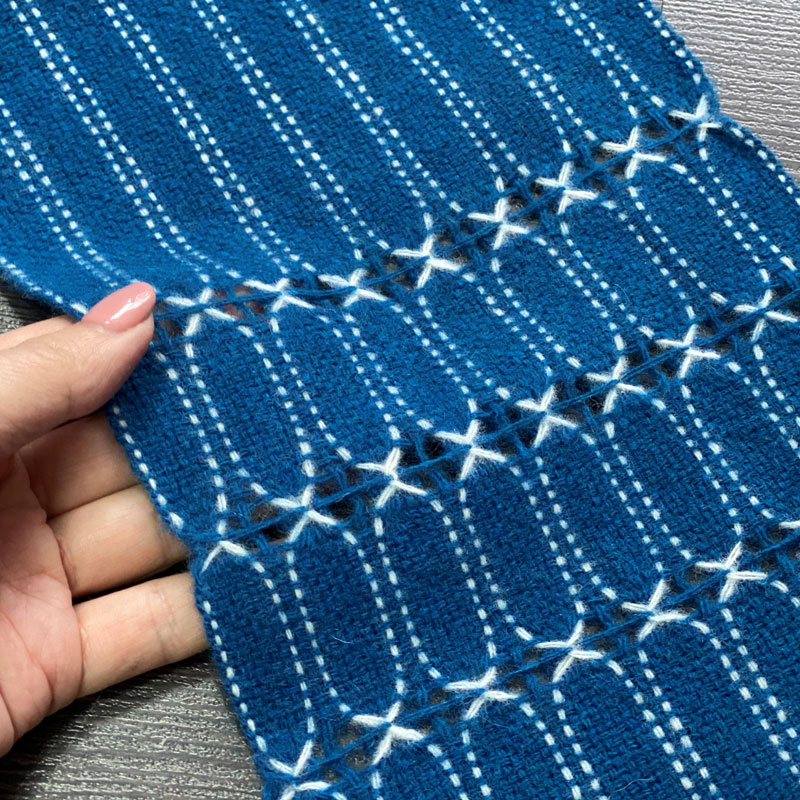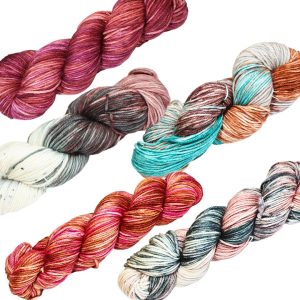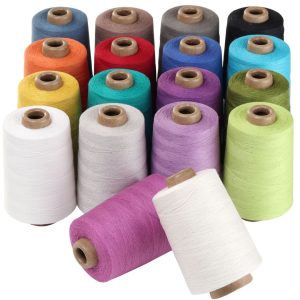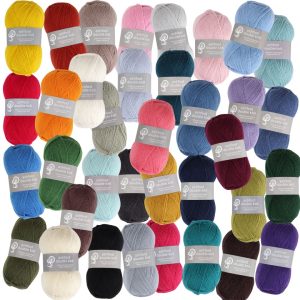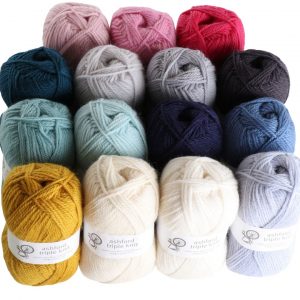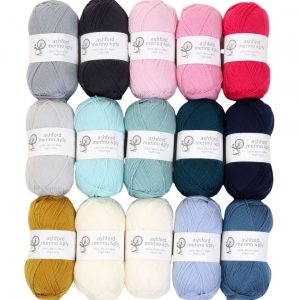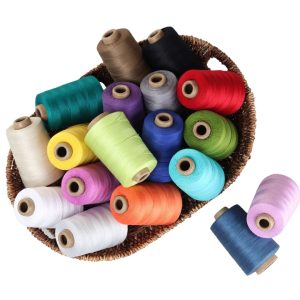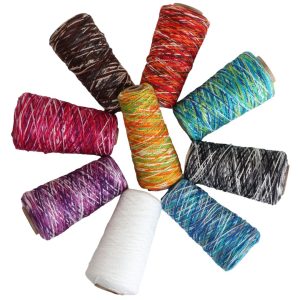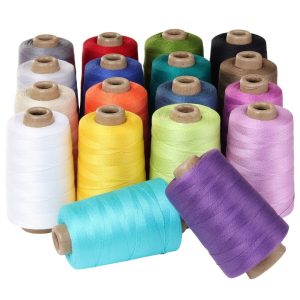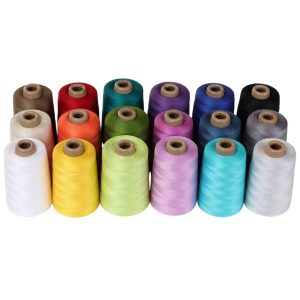Cotton is a versatile and beloved fabric known for its softness and breathability. But have you ever wondered what those numbers like 10/2 or 8/2 mean when referring to cotton? In this guide, we’ll explain the different cotton weights. Giving you a better understanding of which one is right for your next project.
We’ll start by explaining the difference between mercerised and unmercerised cotton. You’ll discover how these treatments affect the fabric’s characteristics, such as strength, lustre, and absorbency. Then, we’ll dive into the various cotton weights. From lightweight cotton fabrics, perfect for warm weather garments, to medium-weight cotton offering a balance between breathability and durability, and heavyweight cotton for colder seasons and structured items, you’ll understand the different options available and their common uses.
By the end of this guide, you’ll have a solid understanding of cotton weights, enabling you to make informed decisions when selecting cotton fabrics for your weaving projects. Get ready to unravel the mystery behind cotton weights and unlock a world of fabric possibilities. Let’s get started!
What is the difference between mercerised and unmercerised cotton?
What ae the differences between cotton weights?
What is the difference between mercerised and unmercerised cotton?
Mercerised cotton and unmercerised cotton are two types of cotton fabric that differ in terms of their production process and resulting characteristics. Keep reading to find out which cotton is perfect for your next project.
Mercerised Cotton:
Mercerised cotton is a cotton fabric that has undergone a treatment called mercerization. The process was developed by John Mercer, an English chemist, in the 19th century. Mercerization involves treating the cotton fibres with a caustic soda solution and then stretching them under tension. This treatment causes the fibres to swell and straighten, resulting in several changes to the fabric:
- Increased Strength: Mercerisation enhances the strength of cotton fibres, making the fabric more durable and resistant to wear and tear.
- Enhanced Lustre: Mercerised cotton has a higher sheen and increased lustre compared to unmercerised cotton. This gives the fabric a more luxurious and glossy appearance.
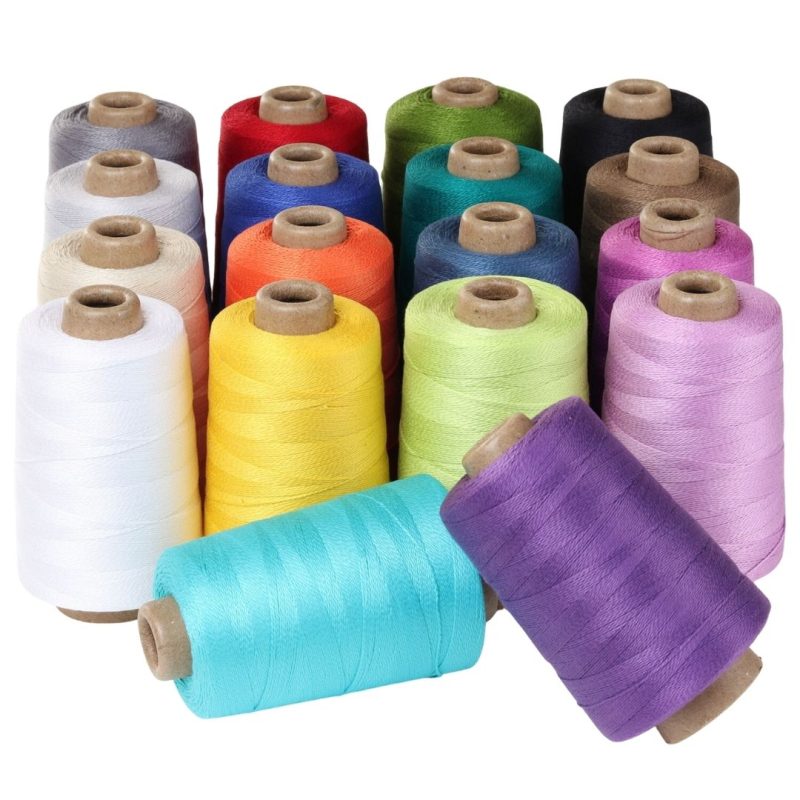
Improved Absorbency: While mercerisation reduces the natural absorbency of cotton to some extent, it still maintains good moisture absorption properties.
Colour Vibrancy: Mercerised cotton has a better affinity for dyes, resulting in brighter and more vibrant colours. The fabric holds dye well and retains its colour even after repeated washes.
Unmercerised Cotton:
Unmercerised cotton, also known as raw or natural cotton, refers to cotton fabric that has not undergone the mercerisation process. It retains its natural properties and appearance. Unmercerised cotton fabrics have the following characteristics:
- Softer Texture: Unmercerised cotton tends to have a softer and more natural feel compared to Mercerised cotton.
- Matte Finish: Unlike mercerised cotton, unmercerised cotton has a matte or slightly dull finish. It lacks the sheen and lustre associated with Mercerised cotton.
- .Greater Absorbency: Unmercerised cotton maintains its high absorbency, making it suitable for applications where moisture absorption is desired, such as towels or bathrobes

What are the differences between cotton weights:
Cotton fabric weight refers to the thickness or density of the fabric, typically measured in ounces per square yard (oz/yd²) or grams per square meter (gsm). The weight of cotton fabric affects its appearance, durability, and suitable applications. Here are some common cotton weights and their characteristics:
Lightweight Cotton:
- Weight: Less than 140 g/m² or 5 oz/yd².
- Characteristics: Thin, breathable, and suitable for warm weather.
- Common Uses: Lightweight clothing such as summer dresses, shirts, blouses, and lightweight scarves.
Medium-weight Cotton:
- Weight: 140-215 g/m² or 5-8 oz/yd².
- Characteristics: Versatile fabric with a balance between breathability and durability.
- Common Uses: Skirts, pants, shirts, light jackets, aprons, curtains, and home textiles like pillowcases and table linens.
Heavyweight Cotton:
- Weight: More than 215 g/m² or 8 oz/yd².
- Characteristics: Thicker, more durable, and less breathable.
- Common Uses: Colder weather clothing such as coats, jackets, jeans, heavy-duty workwear, bags, backpacks, upholstery, and home decor items like heavy curtains and cushion covers.
Please note that these metric conversions are approximate and may vary depending on specific fabric compositions and manufacturing processes. It’s also important to note that these weight categories are general guidelines, and the actual weight of cotton fabrics can vary. Additionally, fabric blends or special treatments can alter the characteristics of cotton fabrics, further adding to the diversity of available options.
Cotton Weights for Weaving:
Ashfords cottons use a weighting system that describes them primarily in the context of weaving. Those being 10/2, 8/2, and 5/2. The numbers represent a system known as the cotton numbering system or cotton count. The cotton numbering system is primarily used in the context of weaving. It helps weavers select the appropriate yarn size for their desired fabric weight and drape.
The cotton numbering system explained:
The first number indicates the yarn size or thickness, and the second number represents the number of strands or plies twisted together to create the yarn.
- The higher the first number, the finer or thinner the yarn.
- A lower second number indicates a single-ply yarn, while a higher second number means the yarn is plied.
For example:
The cotton numbering system, also known as the cotton count or NeC (Number English Cotton), is a system used to indicate the size or thickness of cotton yarn. It is commonly used in the textile industry, particularly in weaving. Here is an outline of the cotton numbering system:
Definition: The cotton numbering system represents the relationship between the weight and length of a given yarn. It is expressed as a fraction or ratio, such as X/Y, where X represents the yarn size or thickness, and Y represents the number of strands or plies twisted together to create the yarn
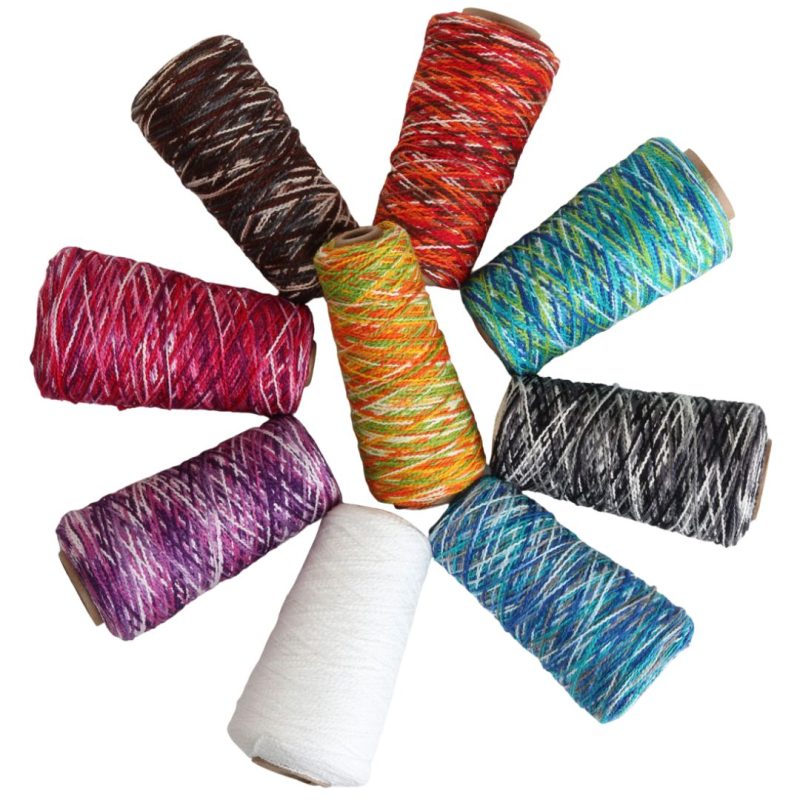
Yarn Size (X):
The first number in the cotton numbering system indicates the yarn size or thickness. It represents the length of yarn required to weigh one pound (or one gram, depending on the system used). The higher the number, the finer or thinner the yarn. For example, a 10-count yarn is finer than a 20-count yarn.
Number of Strands or Plies (Y):
The second number in the cotton numbering system denotes the number of strands or plies twisted together to create the yarn. A lower second number indicates a single-ply yarn, while a higher second number means the yarn is plied. For example, 10/2 yarn consists of two strands twisted together.
Relationship to Weight: The cotton numbering system has an inverse relationship to weight. A higher yarn count indicates a finer yarn, while a lower yarn count corresponds to a thicker yarn. However, it’s important to note that the cotton numbering system focuses on length-to-weight ratio rather than direct weight measurement.
Cotton Weight Examples
Common Examples: Here are some common examples of cotton yarn weights expressed in the cotton numbering system:
- 20/1: An exceptionally fine yarn, suitable for delicate weaves or intricate details.
- 8/4: A medium-weight yarn, often used for towels, table linens, and lightweight fabrics.
- 4/8: A thicker, heavier yarn suitable for blankets, upholstery, or thicker clothing items.
- 10/2 Cotton: In this case, the yarn is quite fine or thin, and it consists of two strands twisted together. It is suitable for delicate weaves or projects that require finer details.
- 8/2 Cotton: This yarn is slightly thicker compared to 10/2, and it also consists of two strands twisted together. It provides a good balance between fineness and durability. It is commonly used for a variety of weaving projects, including towels, table linens, and lightweight clothing.
- 5/2 Cotton: This yarn is thicker than both 10/2 and 8/2, and it consists of two strands twisted together. It is suitable for projects that require a more substantial fabric, such as blankets, upholstery, or thicker clothing items.
Overall, the cotton numbering system provides a standardized method to communicate the size or thickness of cotton yarn, allowing weavers and textile professionals to make informed decisions when selecting yarns for their projects.
Learn more about yarn weights and comparisons here
-
Fiori Australian DK IV Hand Dyed Merino Yarn$26.00 inc GST
-
Cottolin 8/2 – Cotton Linen Blend – 200gm cone$29.50 inc GST
-
Ashford Double Knit 8 Ply Yarn$0.00 – $12.95 inc GST
-
Ashford Triple Knit 12Ply Yarn$13.95 inc GST
-
Ashford Merino 4Ply Yarn$9.60 inc GST
-
Yoga Yarn 8/2 Core Spun Cotton 200gm cone$29.50 inc GST
-
Caterpillar Cotton 200gm cone$41.50 inc GST
-
Mercerised Cotton 5/2 – 200gm cone$29.50 inc GST
-
Mercerised Cotton 10/2 – 200gm cone$29.50 inc GST
Estimated reading time: 8 minutes

